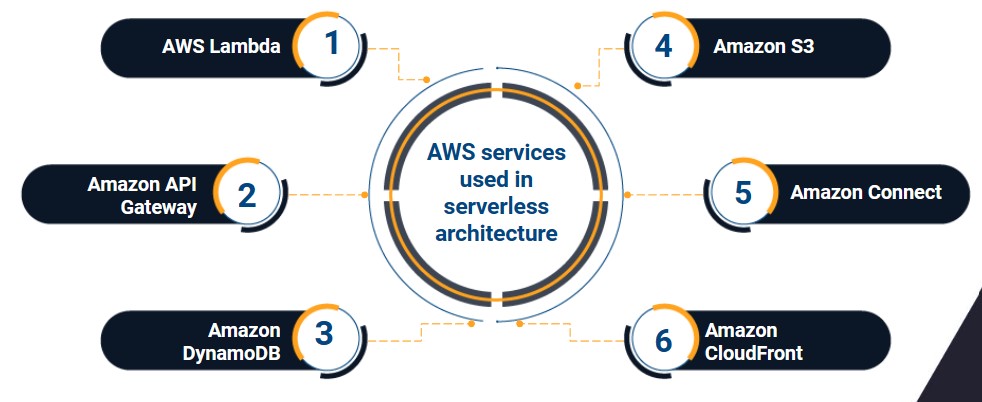
Serverless architecture is a cloud computing concept in which the infrastructure is managed by the cloud provider and resources are automatically provisioned as needed to satisfy a user's request.
Users don't have to worry about managing and growing servers using this design; instead, they can focus on writing and implementing programs. This method saves money because the user only pays for the resources utilized during the execution of their code.
Serverless architecture is a hybrid of event-driven and microservices architecture, in which application components are divided into smaller portions that may be created, deployed, and scaled independently. In serverless architecture, Lambda functions are frequently used to do specific activities in response to an event trigger.
Amazon Web Services Serverless Architecture
AWS Lambda is a comprehensive set of serverless architecture services provided by AWS. AWS Lambda is a computation service that allows you to run code without the need for server setup or management, and thus is a critical component of serverless architecture.
Here are some AWS services that are often utilized in serverless architecture:
- AWS Lambda: A compute service that executes code in response to events and triggers. It can be used by developers to execute backend code in response to HTTP requests, database changes, or other events.
- Amazon API Gateway is a fully managed service that allows developers to easily construct, publish, administer, and monitor RESTful APIs at scale.
- Amazon DynamoDB is a fully managed NoSQL database that offers quick, predictable performance and scalability.

- Amazon S3 is a cloud-based object storage solution that provides industry-leading scalability, data availability, security, and performance.
- Amazon Connect is a cloud-based contact center service that allows consumers to communicate with agents via voice and chat channels.
- Amazon CloudFront is a high-performance content delivery network (CDN) service that securely delivers data, video, apps, and APIs to customers worldwide.
Developers can use these AWS services to create highly scalable, fault-tolerant, and cost-effective serverless applications. Developers can concentrate on developing code rather than managing infrastructure while using serverless architecture.

At its annual event, Rootstack will present a fascinating discussion on this issue
Rootstack specialists will discuss serverless architecture and all of the benefits it may offer to your technology project at our upcoming annual event on September 21 at the Hilton hotel in Panama.
The session focuses on AWS serverless, how to get started with a serverless architecture, and, more importantly, Node and Javascript in the cloud. This session will serve as an introductory tutorial, with basic examples of how to begin working with this technology, as well as basic instances of its application, with the content directed at people of all types, without the need for specific technical knowledge.

The presentation discusses what a serverless architecture is, how it works, how to start an application with this technology, current alternatives, and ultimately a little demonstration of how to work with this type of technology.
In addition, we will discuss the advantages of using this technology in the middle of the presentation. Typically, it has to do with cost, rapid development because deployments take little time, allowing the client and developer to see changes in production sooner.
We recommend you on video

